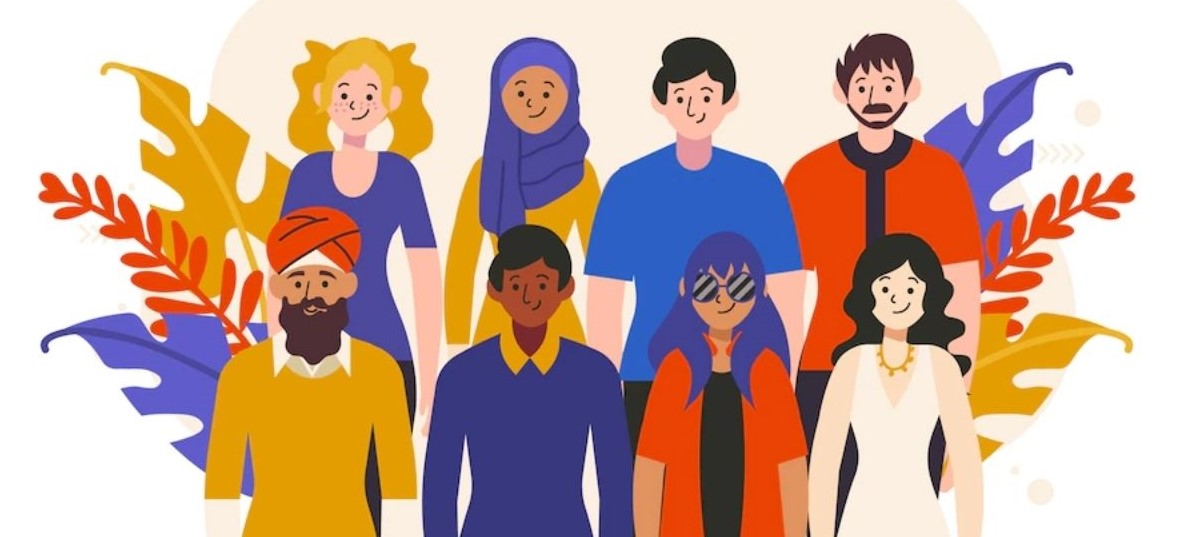Introduction:

Institutions Safeguarding Minority Rights:
• Implementation of financial assistance programs for education, health, and skills development.
• Coordination with State Governments to ensure the smooth execution of welfare schemes at the local level.
• Empowering minority women through targeted schemes and initiatives.
2. National Commission for Minorities (NCM)
• Advisory Role: Provides recommendations on legislation and government policies affecting minorities.
• Protection of Rights: Addresses grievances regarding violations of minority rights, including in the spheres of education, employment, and personal freedom.
• Reports and Studies: Regularly publishes reports evaluating the social and economic conditions of minorities and their access to public services.
3. Waqf Act and Central Waqf Council (CWC)
- Qaumi Waqf Board Taraqqiati Scheme (QWBTS): This scheme helps digitize records of waqf properties, facilitating better management and reducing encroachment.
- Shahari Waqf Sampatti Vikas Yojana (SWSVY): Provides interest-free loans for developing commercially viable projects on waqf properties, thereby generating sustainable income for the community.

Government Schemes for Minority Welfare:
1. Promoting Education
• Pre-Matric Scholarship Scheme (for Classes IX-X):
• Target Audience: Students from minority communities.
• Key Features: Financial aid to cover educational expenses such as fees, books, and uniforms.
• Fund Utilized (2008-2023): ₹12,250.44 crore for 710.94 lakh beneficiaries.
• Impact: Significant increase in enrolment rates among minority students.
• Post-Matric Scholarship Scheme (for Classes XI-Ph.D.):
• Target Audience: Students pursuing higher education.
• Key Features: Covers fees for undergraduate, postgraduate, and doctoral programs.
• Fund Utilized (2008-2023): ₹5171.52 crore for 92.39 lakh beneficiaries.
• Impact: Enhanced access to higher education, with more minority students pursuing professional courses.
2. Skill Development Programs
Pradhan Mantri Virasat Ka Samvardhan (PM VIKAS)
1. Seekho Aur Kamao (Learn and Earn):
• Focuses on skill training for youth in various fields.
• Funds Utilized (2020-2023): ₹1744.35 crore, benefiting 4.68 lakh individuals.
• Provides training in sectors such as retail, hospitality, healthcare, and IT.
2. Nai Manzil (New Horizon):
• Offers training to youth who have dropped out of school, helping them complete their education and gain employable skills.
• Funds Utilized (2020-2023): ₹456.19 crore, benefiting 98,709 youth.
3. USTTAD (Upgrading the Skills of Traditional Artisans):
• Preserves traditional skills while providing modern enhancements to improve marketability.
• Funds Utilized (2020-2023): ₹288.68 crore.
3. Entrepreneurship and Economic Empowerment
• Micro Credit Scheme: Offers small loans for the establishment of small businesses.
• Term Loan Scheme: Provides low-interest loans for setting up larger businesses.
• Funds Disbursed (till 2023-24): ₹8771.88 crore
• Beneficiaries: 23.85 lakh entrepreneurs
• District Focus: PMJVK operates in 1300 MCDs, Blocks, and Towns across India.
• Infrastructure Projects: The scheme finances the development of schools, healthcare centers, roads, and other essential facilities in these districts.
Expenditure (2022-2023): The program has expanded under the 15th Finance Commission guidelines, reflecting the government’s commitment to infrastructural development in these underdeveloped regions.
Preserving Minority Culture and Heritage
The Jiyo Parsi Scheme, launched in 2013-14, aims to address the declining population of Parsis, an ethnoreligious minority. This initiative includes providing financial assistance for fertility treatments, medical aid, and other support systems.
• Funds Utilized (2014-2024): ₹26.78 crore
• The program has helped 414 Parsi children be born, reversing the declining trend in the community’s population.
Promoting Linguistic and Cultural Heritage
- Pali Language Classical Status (2024): The recognition of Pali as a classical language highlights India’s commitment to preserving its rich Buddhist heritage.
- International Abhidhamma Divas (2024): Celebrates the teachings of the Buddhist scriptures, reaffirming India’s role in safeguarding Buddhism’s spiritual and cultural heritage.
|
Probable questions for UPSC Mains exam: Examine the effectiveness of the Ministry of Minority Affairs in addressing the challenges faced by minority communities in India. How have the schemes under this Ministry contributed to the socio-economic empowerment of minorities, and what improvements are needed to enhance their impact? |







